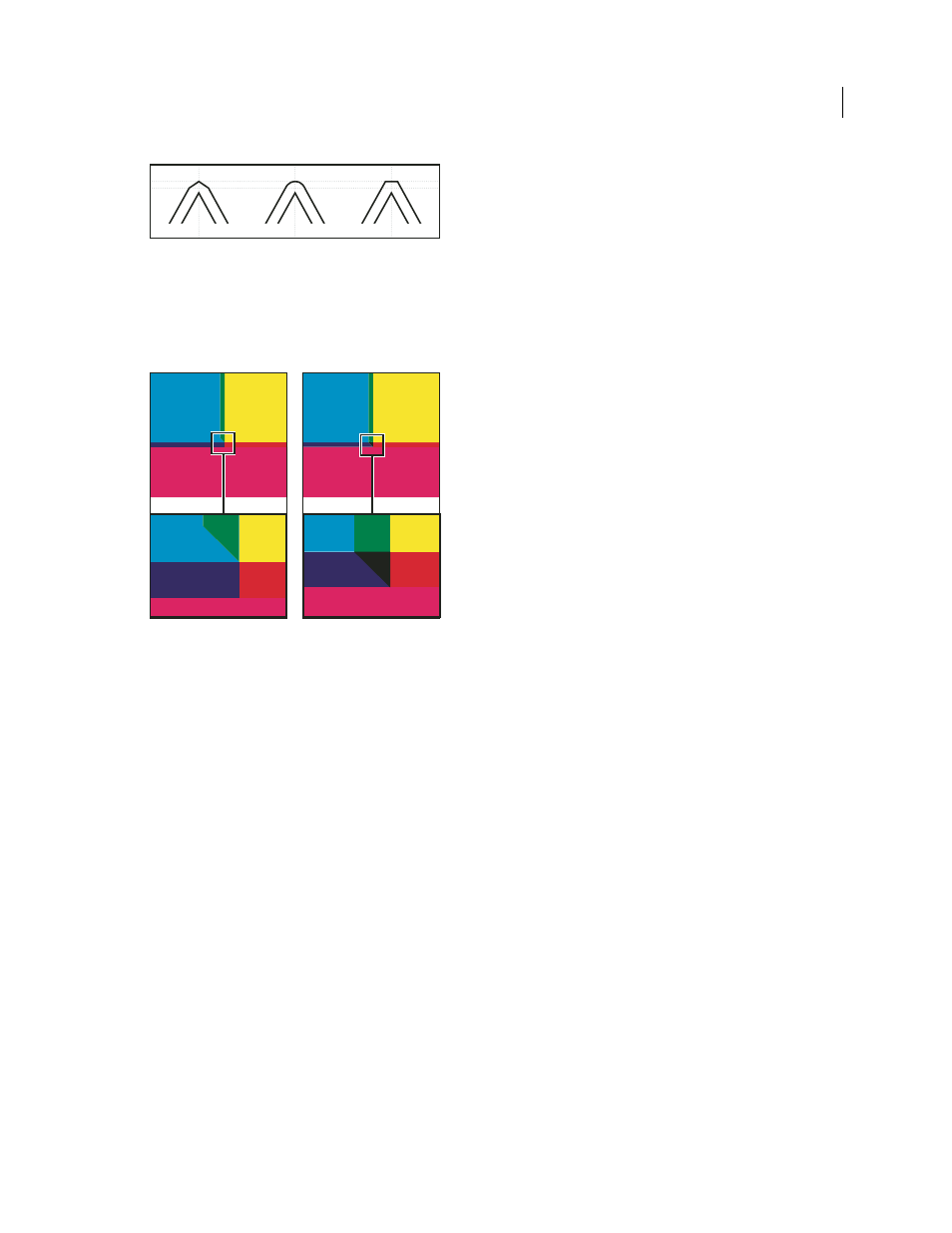Trap thresholds – Adobe InDesign CS5 User Manual
Page 502

496
USING INDESIGN
Trapping color
Last updated 11/16/2011
Trap join examples, left to right: miter join, round join, bevel join
End Style
Controls the intersection of three-way traps. Miter (the default) shapes the end of the trap to keep it away
from the intersecting object. Overlap affects the shape of the trap generated by the lightest neutral density object that
intersects with two or more darker objects. The end of the lightest trap is wrapped around the point where the three
objects intersect.
Close-up of trap end examples: miter (left) and overlap (right)
Trap thresholds
Step
Specifies the color change threshold at which the trapping engine creates a trap. Some jobs need only the most
extreme color changes trapped, while others require traps for more subtle color changes. The Step value indicates the
degree to which components (such as CMYK values) of abutting colors must vary before trapping occurs.
To change how much the component inks in abutting colors can vary before causing those colors to trap, increase or
decrease the value for Step in the New Trap Preset or Modify Trap Preset Options dialog box. The default is 10%. For
best results, use a value from 8% to 20%. Lower percentages increase sensitivity to color differences and result in more
traps.
Black Color
Indicates the minimum amount of black ink required before the Black trap width setting is applied. The
default value is 100%. For best results, use a value no lower than
70%.
Black Density
Indicates the neutral density value at or above which InDesign considers an ink to be black. For
example, if you want a dark spot ink to use the Black trap width setting, enter the neutral density value here. This value
is typically set near the default of 1.6.
Sliding Trap
Determines when the trapping engine starts to straddle the centerline of the color boundary. The value
refers to the proportion of the lighter color’s neutral density value to a darker, abutting color’s neutral density value.
For example, setting the Sliding Trap value to 70% moves the point at which the trap begins to straddle the centerline
to where the lighter color exceeds 70% of the darker color in neutral density (lighter color’s neutral density divided by
darker color’s neutral density > 0.70). Colors of identical neutral density will always have their traps exactly straddle
the centerline, unless the Sliding Trap is set to
100%.
Trap Color Reduction
Indicates the degree to which components from abutting colors are used to reduce the trap
color. This setting is useful for preventing certain abutting colors (such as pastels) from making an unsightly trap that
